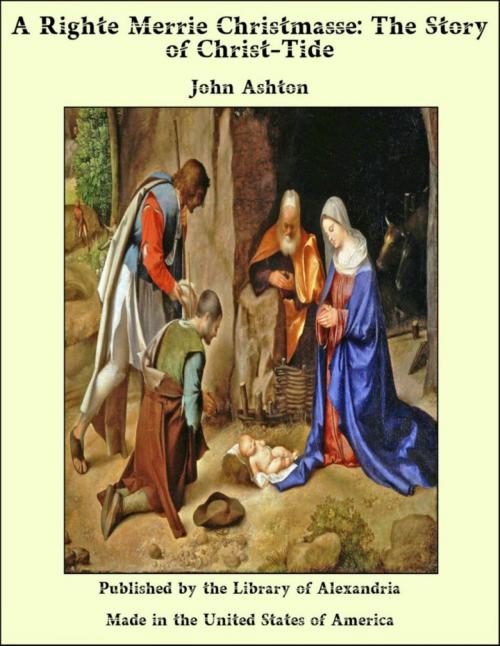A Righte Merrie Christmasse: The Story of Christ-Tide
Nonfiction, Religion & Spirituality, New Age, History, Fiction & Literature| Author: | John Ashton | ISBN: | 9781465515384 |
| Publisher: | Library of Alexandria | Publication: | March 8, 2015 |
| Imprint: | Language: | English |
| Author: | John Ashton |
| ISBN: | 9781465515384 |
| Publisher: | Library of Alexandria |
| Publication: | March 8, 2015 |
| Imprint: | |
| Language: | English |
The day on which Jesus Christ died is plainly distinguishable, but the day of His birth is open to very much question, and, literally, is only conjectural; so that the 25th December must be taken purely as the day on which His birth is celebrated, and not as His absolute natal day. In this matter we can only follow the traditions of the Church, and tradition alone has little value. In the second and early third centuries of our æra, we only know that the festivals, other than Sundays and days set apart for the remembrance of particular martyrs, were the Passover, Pentecost, and the Epiphany, the baptism or manifestation of our Lord, when came "a voice from Heaven saying, This is my beloved Son, in whom I am well pleased." This seems always to have been fixed for the 6th of January, and with it was incorporated the commemoration of His birth. Titus Flavius Clemens, generally known as Clemens of Alexandria, lived exactly at this time, and was a contemporary of Origen. He speaks plainly on the subject, and shows the uncertainty, even at that early epoch of Christianity, of fixing the date: "There are those who, with an over-busy curiosity, attempt to fix not only the year, but the date of our Saviour's birth, who, they say, was born in the twenty-eighth year of Augustus, on the 25th of the month Pachon," i.e. the 20th of May. And in another place he says: "Some say that He was born on the 24th or 25th of the month Pharmuthi," which would be the 19th or 20th of April.
The day on which Jesus Christ died is plainly distinguishable, but the day of His birth is open to very much question, and, literally, is only conjectural; so that the 25th December must be taken purely as the day on which His birth is celebrated, and not as His absolute natal day. In this matter we can only follow the traditions of the Church, and tradition alone has little value. In the second and early third centuries of our æra, we only know that the festivals, other than Sundays and days set apart for the remembrance of particular martyrs, were the Passover, Pentecost, and the Epiphany, the baptism or manifestation of our Lord, when came "a voice from Heaven saying, This is my beloved Son, in whom I am well pleased." This seems always to have been fixed for the 6th of January, and with it was incorporated the commemoration of His birth. Titus Flavius Clemens, generally known as Clemens of Alexandria, lived exactly at this time, and was a contemporary of Origen. He speaks plainly on the subject, and shows the uncertainty, even at that early epoch of Christianity, of fixing the date: "There are those who, with an over-busy curiosity, attempt to fix not only the year, but the date of our Saviour's birth, who, they say, was born in the twenty-eighth year of Augustus, on the 25th of the month Pachon," i.e. the 20th of May. And in another place he says: "Some say that He was born on the 24th or 25th of the month Pharmuthi," which would be the 19th or 20th of April.















